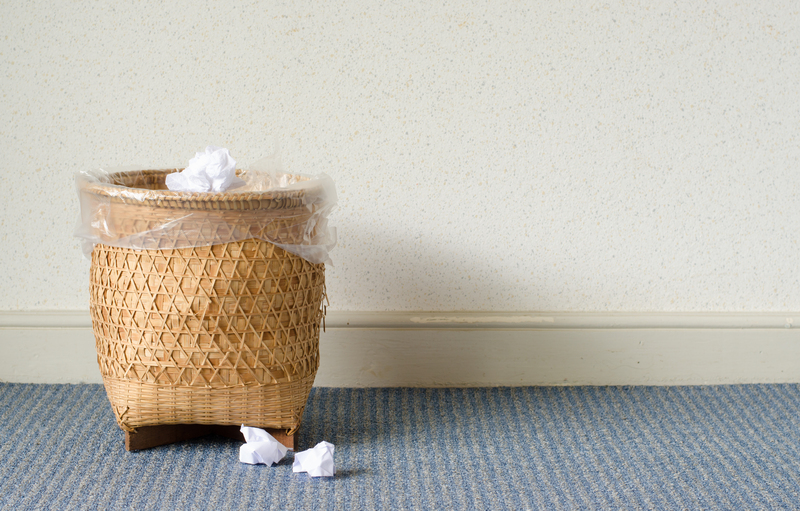Eco-Smart Plant Pot Disposal Methods: Creating a Sustainable Garden
In today's world, where sustainability and eco-friendliness have become crucial, gardeners and plant enthusiasts are seeking eco-smart plant pot disposal methods. As gardening continues gaining popularity, so does the use of various types of plant pots - plastic, ceramic, biodegradable, and more. Unfortunately, the improper disposal of these containers can contribute heavily to environmental waste. This comprehensive guide will discuss eco-smart ways to dispose of plant pots while maintaining an environmentally conscious garden.

Why Is Eco-Friendly Plant Pot Disposal Important?
Improper disposal of gardening materials, especially non-biodegradable pots such as plastics, leads to landfill overflow and environmental pollution. Opting for eco-smart disposal techniques not only reduces waste but also supports a circular economy, conserving resources and protecting local ecosystems.
- Plastic pots: Can take hundreds of years to decompose if not recycled.
- Ceramic and clay pots: Though natural, their production and improper disposal can still impact the environment negatively.
- Biodegradable pots: Decompose quickly, but require correct disposal for minimal impact.
Eco-Smart Plant Pot Disposal Methods: The Best Options
1. Reuse and Upcycle
The first rule for eco-smart plant pot disposal is reuse whenever possible. Reusing pots reduces the demand for new materials and minimizes the volume of waste generated.
- Repotting: Clean and reuse old pots for starting seeds or propagating new plants.
- Craft Projects: Get creative by painting or decorating old plant pots for indoor organization, pen holders, or artistic displays.
- Community Share: Donate extra pots to schools, community gardens, local plant swaps, or gardening clubs. Many local nurseries appreciate receiving gently used pots.
2. Recycle Plant Pots Properly
Recycling is a core element of eco-smart plant pot disposal. However, it's essential to know which pots are recyclable and to prepare them correctly.
- Identify recyclable plastics: Most plastic pots are made from types #2 (HDPE) or #5 (PP), which are recyclable in many municipal programs. Check local guidelines and look for recycling symbols on your pots.
- Clean thoroughly: Remove all soil and plant residue to prevent contamination of recycling streams.
- Local garden centers: Many nurseries collect used plastic pots for recycling through take-back schemes. Ask your local store if they participate.
Tip: Avoid mixing non-recyclable plastics (such as black plastic pots, which recycling machines often can't detect) with recyclable ones.
3. Compost Biodegradable and Organic Pots
Biodegradable plant pots made from peat, coconut coir, rice hulls, or cardboard can be composted at home. These will break down naturally, returning nutrients to the soil.
- Check if they're truly biodegradable: Some pots may be labeled as "biodegradable" but contain synthetic binders. Make sure your pots are 100% organic.
- Direct planting: Some biodegradable pots can be planted directly into the ground, where they'll break down with the plant's growth.
- Add to compost bin: Tear or crush pots into small pieces and add to your compost heap for faster decomposition.
4. Repurpose in the Garden
Even non-recyclable or cracked pots can be given a second life in the garden. Here are some eco-smart disposal strategies through repurposing:
- Pond planters: Use old plastic pots in ponds to control invasive aquatic plants.
- Drainage aids: Break ceramic or clay pots into shards and place them at the bottom of larger pots for improved drainage.
- Mulch guards: Cut plastic pots into rings to use as mulch guards around trees and new plants, reducing weed growth and retaining moisture.
5. Return to Retailers
Many garden retailers now run schemes for returning used plant pots and trays. This circular strategy ensures old pots are reused or recycled efficiently. Ask your supplier about take-back programs and check their drop-off points or collection services.
Disposing of Different Types of Plant Pots Eco-Consciously
Plastic Plant Pots
Plastic pots are the most widely used but also the most problematic in terms of environmental impact. Here's how to make their disposal eco-friendlier:
- Always clean out soil and rinse pots before recycling.
- Combine community efforts by organizing local recycling drives for gardening pots.
- Label carefully: Some plastics look similar but have different recycling requirements. Identify and sort by recycling codes.
- If local recycling is unavailable, seek out specialist recycling facilities.
Ceramic and Clay Pots
Ceramic pots rarely break down naturally and are typically not accepted in standard recycling streams. However, here are some eco-friendly alternatives:
- Upcycle: Convert old ceramic pots into garden art, mosaic tiles, or decorative elements in landscaping.
- Use broken pieces as drainage layers in new planters or outdoor pathways.
- Donate to local artists or schools for creative reuse.
Biodegradable and Compostable Pots
These are a fantastic choice for eco-smart gardeners. Since they decompose naturally, they won't contribute to landfill waste if handled correctly. Here's what to do:
- Confirm the packaging claims by checking for official certifications (like ASTM D6400 for compostables).
- Compost at home or through your municipality's organic waste collection service.
- Support brands committed to sustainable production and transparency about their eco-claims.
Innovative Alternatives and Future Trends
Choose Eco-Friendly Pots Upfront
The most eco-smart approach starts before purchase. Select pots made from recycled plastic, natural fibers, or biodegradable materials. Some companies now offer plant pots made from ocean plastics, bamboo composites, or rice husk. These alternatives dramatically reduce environmental impact from the outset.
Participate in Local Initiatives
- Look for community programs dedicated to gardening waste.
- Join social media groups or forums to exchange plant pots within your neighborhood.
- Suggest or organize regular pot recycling days at community gardens or local stores.
Educate and Advocate
Spreading knowledge about eco-smart plant pot disposal techniques helps wider community adoption. Share your practices and successes on social media, with friends, and in local gardening groups.
Common Mistakes in Plant Pot Disposal to Avoid
- Throwing plant pots into general waste: This should be a last resort due to the environmental burden.
- Contaminating recycling streams: Not cleaning pots or mixing types of plastics can cause rejection of entire loads.
- Mislabelling biodegradable pots: Biodegradable does not always mean compostable or plastic-free.

Practical Steps for Sustainable Plant Pot Disposal
- Inspect your pots: Check the material type and see whether it's reusable, recyclable, compostable, or needs special handling.
- Clean thoroughly: Soil and plant materials can hinder recycling and composting efforts. Rinse and scrub if needed.
- Set up a sorting bin: Keep reusable, recyclable, and compostable pots separate for easy management.
- Engage with local resources: Research your municipality's guidelines or connect with garden centers for take-back or recycling opportunities.
- Encourage a "zero waste" approach: Aim for complete reuse and responsible disposal to minimize landfill reliance.
Conclusion: Growing Greener with Eco-Smart Plant Pot Disposal Methods
Managing plant pot waste carefully is essential for fostering an environmentally friendly garden and community. By incorporating these eco-smart plant pot disposal methods--from recycling and repurposing to composting and community engagement--you can significantly reduce your carbon footprint and set an example for others. As garden lovers, it's our duty to nurture not just our plants, but also the planet they grow on. With thoughtful disposal practices, we all contribute to a more sustainable, greener future.
Remember: The journey to sustainable gardening doesn't end with your plants. By embracing eco-smart plant pot disposal techniques, you ensure the cycle of nature continues, and the environment flourishes for generations to come.